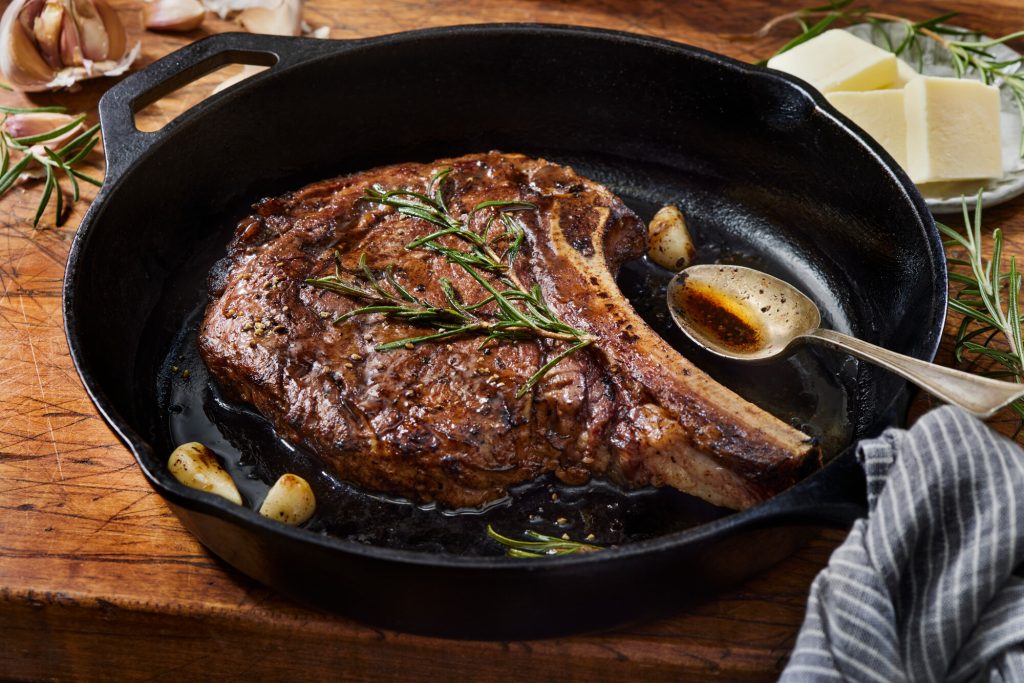AB Direct - Steers
Rail: ---
AB Direct - Heifers
Rail: ---
US Trade- Steers
Rail: ---
US Trade - Heifers
Rail: ---
Canadian Dollar
0.04

Consumer trends through the pandemic
Toilet paper panic, endless zoom calls and the renaissance of homemade sourdough bread. Those are just a few of the images likely to be long associated with the pandemic of ’20-’21.
As producers, you know about the challenges the shutdown posed in your world, but what about at the other end of the food spectrum? What lasting impact could there be on how today’s consumer thinks and shops?
Dana McCauley has been carefully observing and analyzing those trends from her home base in Ontario. Her varied work experience keeps her on the leading edge of what Canadian shoppers look for when it comes to food. She’s an innovator and entrepreneur, has written cookbooks, judged reality cooking shows, and has just wrapped up time as a Director of New Venture Creation at the University of Guelph.
“You saw people really geeking out on their barbecuing, and the whole ‘reverse sear’ steak became super popular during the pandemic, with lots of people sharing that on social media.”
McCauley observed while the early ‘hoarding’ came out of a fear of supply chain shortages, in reality, the Canadian food system weathered the pandemic storm relatively well. Yes, there were some hiccups with COVID-related plant shutdowns, but consumers very rarely faced whole scale empty shelves, like so many shoppers in places like Russia or Cuba see regularly. But she notes there are some delayed disruptions we’re still seeing on occasional imported ingredients. Throw in the ship stuck in the Panama Canal and a strike in China, and global food movement has not been exactly smooth sailing.

“In the food sector, it’s pretty low impact (not like chips for automobiles), but it IS interesting to see this ripple effect,” says McCauley. “There are some things missing from the shelves and a few things we’re used to buying that aren’t there. Are they shortages? No, but there are some of these really interesting things to learn from how long it took to feel some of the impacts that we thought would be really fast.”
One of the first lockdown consumer shifts was to buying more ingredients, securing the staples ‘just in case’, and as McCauley points, because people had to cook more at home.
“That, I think, will linger, now that a lot of us have gotten into the habit of pantry stocking and cooking.”
Another purchase inclination which surfaced that many hope will stick is the support for local businesses and food producers. Even big grocers embraced it, often featuring signage, stories, and displays showcasing local and Canadian food products.
Getting creative with beef choice on a budget
Some producers even managed to find and market directly to customers. While not all consumers had the freezer space for a full half beef or side of pork (especially as freezers became in short supply!) specialty ‘boxed’ meat services gained ground. McCauley saw enterprises pop up based on Omaha Steaks or Carnivore Club models, curating a variety of artisan type cuts. Instead of just a special occasion gift, they became a more regular go-to, and another avenue to promote local.
Another ‘local’ motivation gaining momentum even pre-pandemic is what McCauley calls ‘caring commerce’ — buyers supporting companies they care about. As life moves back to more normal patterns, she does predict a divide there. People who were able to keep their jobs and save money will likely stick with paying extra and curating their food likes. But those who’ve had more precarious employment and income hits will be cash conscious.
“They’re going to turn back into being value shoppers, so I think beef and other meat producers who can cater to that value consumer and give them what they emotionally want — which is to support local, to support things they like, to treat themselves, to have this “eatertainment” experience — but they can do it at lower prices, they’re really, really going to do well, and make quite loyal customers who will stick with them when they do become more prosperous again.”
Realizing new opportunity through ranch branded retail
When it comes to food preparation, by year two of the lockdown, people got bored of eating the same things and McCauley observed lots of ‘going deep’ into the cooking world.
“People were trying different cuts of meat, along with rediscovering family cookbooks, or watching YouTube cooking videos.”
“You saw people really geeking out on their barbecuing, and the whole ‘reverse sear’ steak became super popular during the pandemic, with lots of people sharing that on social media,” she chuckled, about something she’s not super sold on herself.

But it also meant people were trying different cuts of meat, along with rediscovering family cookbooks, or watching YouTube cooking videos.
So the buyer going to the grocery store today, armed with all this extra knowledge, is much more of an afficionado than in the past, shopping their values and preferences.
“The old-style packaging styrofoam with a little sticker on a piece of plastic wrap just doesn’t serve their needs,” McCauley explains. “That’s why you see so much more branding in the meat aisle, and so many more shrink-wrapped things that include full colour photography and what marketers call ‘romance copy’.”
McCauley, who’s now the Chief Experience Officer for the new Canadian Food Innovation Network, doesn’t believe we’ll move back to generic meat, because purchasers have power, and they know how to use it.
“The millennials and GenZ’s, many of them are digital natives. They’ve always had the internet. They always could find information, and now they have it in their pocket or in their hand ALL the time. Even if you’re selling something that is value-priced and pretty generic and commoditized, I think you’re going to need to be aware that what people want in-store, even as they’re holding two products, is to be able to access information that will help them to make their choice, beyond just price and the look of the product.”
As Dana McCauley ponders where today’s consumer mindset is at, and how players like the meat industry can build bridges and better relations, she does see one gap area in the storytelling.
“I think there’s a challenge for the meat industry to really tell people how meat goes from being an animal walking around and breathing, to being in the store.”
Rather than letting assumptions build about the processing end of meat production, she believes consumers can handle the truth, and would be reassured to see the food safety and protocols in place to ensure best outcomes for both workers and consumers. Alongside pictures of farmers in the field with their cattle, McCauley says it would be good to see butchers and plant
workers taking pride in their role in getting meat to the customer’s table.
“I think there’s an opportunity there to bring people into the process and see that it’s not some big weird scary robot factory, but it’s a lot of people standing and working really cooperatively, to do what can be done more easily with many hands.”
McCauley suggests we’d be doing more for ‘food literacy’ by being open about the process along the way.
“We’ll be more sustainable if we all actually are better educated and think more about what we’re buying … and disclosing that kind of info to the public, and kids in home economics and science classes.”
This article was first published in the September 2021 edition of ABP Magazine. Watch for more digital content from the magazine on ABP Daily.

